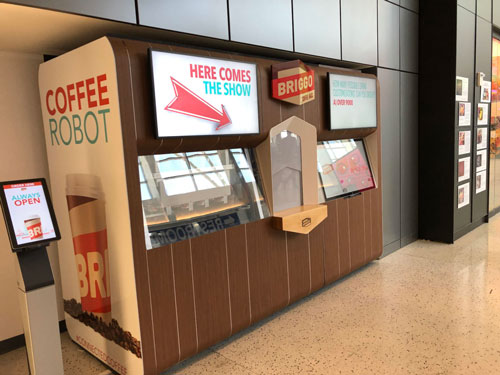November 6, 2019
The Self-Service Retail Formula: Know Your Why, Start Small and Prioritize FlexibilityThe Self-Service Retail Formula: Know Your Why, Start Small and Prioritize Flexibility

Today’s consumers are always on the go, and they expect their retail experiences to be accommodating of this dynamic. It’s a lifestyle of convenience, expedited service and curated offerings where shoppers increasingly prefer self-service. In fact, consumer respondents to a 2019 study overwhelmingly favored self-service technologies to improve their physical retail experience, with 73 percent of shoppers favoring this shopping method – an increase of more than 10 percent over the previous year.
Of course, it doesn’t take a research report to know industry competitors are rising to the occasion. We see headlines announcing Amazon Go stores bringing “grab and go” convenience to the next level and others lauding Taco Bell’s award-winning self-service kiosks. Beyond familiar solutions like price scanners and self-checkouts in retail environments, we’re seeing innovations like Briggo’s “connected coffee” robots available in airports and on corporate campuses. Never have consumers enjoyed more conveniences through self-service, and the trend shows no sign of slowing down.

For retailers looking to implement a self-service experience, there are best practices to consider and adopt quickly: Know your “why,” dream big while starting small, and prioritize flexibility as you implement.
Brainstorm in-store possibilities and begin with a crawl
Self-service technology can be beneficial for a variety of retail verticals, and the value proposition depends on the products or services offered, as well as the specific store format. For a big-box retailer with sales associates spread over a large area, it might be in the form of a price checker, returns kiosk, availability lookup tool, BOPIS pickup or product locator. For smaller boutique or tech-centric retailers, self-service technology could be a product “look-book” or loyalty solution to review the customer’s full history and recent purchases.
If thinking through your in-store possibilities has you itching to put something in motion, take a moment to start slowly and embrace a “crawl, walk, run” approach. As you begin to pilot test solutions in a subset of stores (crawl) and roll out to other locations after proof-of-concept success (walk), you’ll have the IT endurance and experience to continue delivering (run) the interactive convenience your shoppers crave across all locations.
Dream big and imagine all the interconnected, interactive technology you’d like to establish. Just don’t break into a run from the start. With the right technology in place, you’ll quickly scale new self-service activations chain wide.
Stay flexible and adapt to what your consumer needs
When enhancing the shopping journey for your customers through interactive experiences, be sure your hardware and software are both flexible enough to evolve with changing needs. It’s important to consider how a digital screen can support the various use cases you have in mind, now and in the future. Like smartphones with multiple apps, interactive self-service implementations can be a portal into a retailer’s full capabilities. Furthermore, when your devices leverage mobile architecture, you can keep pace using the same consumer applications and content adapted for in-store to meet your customers’ expectations.
In-store interactive digital experiences engage your customers in ways they want to connect. Interactive self-service continues to roll out to restaurant chains worldwide as customer preferences demand to evolve with the digital age. Retailers looking to join the race must do so with a clear vision as well as the right deployment approach (“crawl, walk, run”) for the journey ahead.